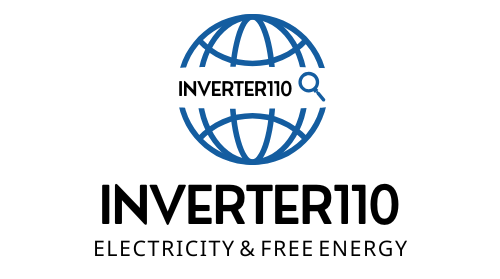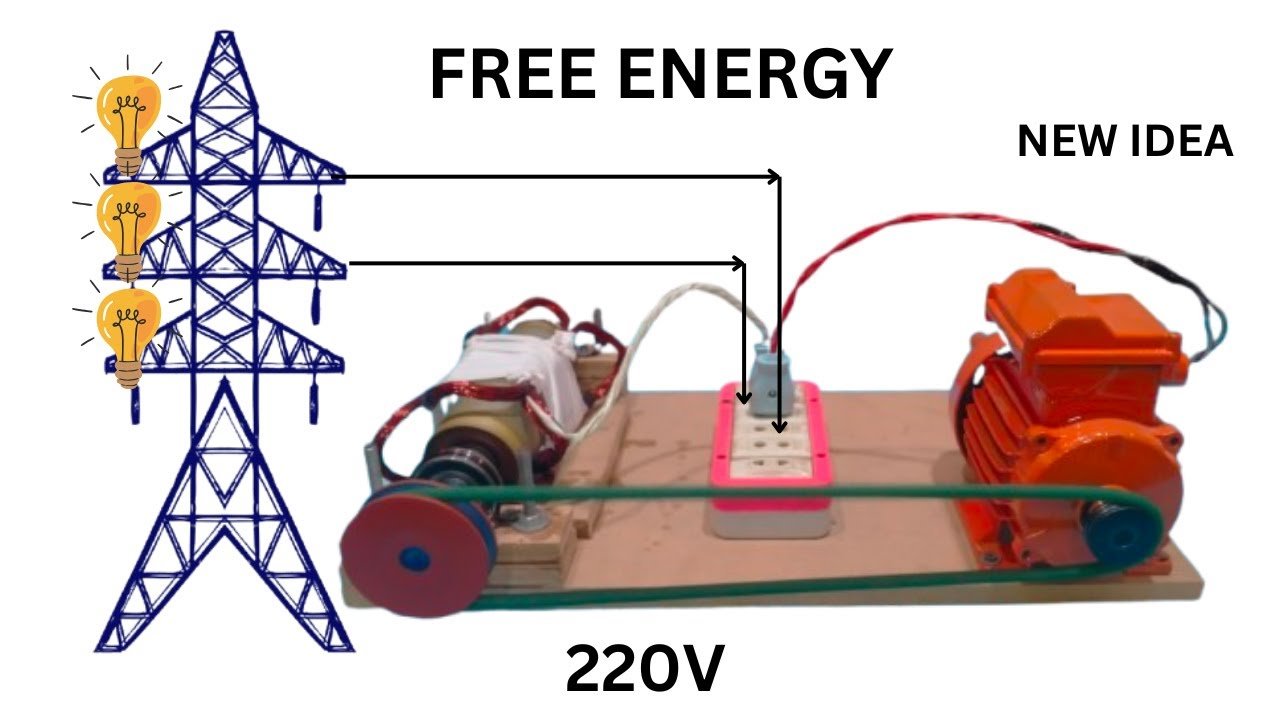How To Make a Free Energy Generator with 48V BLDC Motor & Magnetic 4 Pole Rotor at Home
Creating a free energy generator at home using a 48V BLDC (Brushless DC) motor and a magnetic 4-pole rotor is a fascinating and educational project for enthusiasts and hobbyists interested in renewable energy and sustainable engineering. This guide will walk you through the complete process, from understanding the fundamental concepts to assembling your very own energy generator.
Table of Contents:
- Introduction
- Understanding Free Energy Concepts
- What is a BLDC Motor?
- Working of a 48V BLDC Motor
- Role of Magnetic 4 Pole Rotor
- Tools and Materials Required
- Designing the Generator
- Assembling the Rotor and Stator
- Creating the Magnetic Field
- Wiring the Coils
- Creating the Rectifier Circuit
- Voltage Regulation and Output Control
- Safety Precautions
- Testing and Performance Evaluation
- Practical Applications
- Troubleshooting Common Issues
- Efficiency Optimization Tips
- Maintaining Your Generator
- Legal and Ethical Considerations
- Conclusion
1. Introduction
Energy consumption has increased dramatically in recent years, creating a growing interest in alternative, sustainable, and independent energy sources. Free energy generators are based on principles that reduce or eliminate the need for fossil fuels or grid-based electricity. In this guide, you will learn how to use a 48V BLDC motor combined with a magnetic 4-pole rotor to build your own energy generator.
2. Understanding Free Energy Concepts
Free energy is often misunderstood. It does not mean infinite or perpetual energy from nowhere. In this context, “free” refers to off-grid, renewable, and reusable sources like magnetic fields, solar power, and motion energy. The idea is to harness kinetic or magnetic forces and convert them into electricity with minimal input.
3. What is a BLDC Motor?
A Brushless DC (BLDC) motor is an electric motor powered by DC electricity and uses an electronic controller to switch the phases to the motor windings. It is highly efficient, long-lasting, and commonly used in applications requiring precise control and speed.
Advantages:
- High efficiency
- Low maintenance
- Long life
- Compact size
4. Working of a 48V BLDC Motor
The 48V BLDC motor operates using a 48-volt power supply. It has a stator (stationary part) with windings and a rotor (rotating part) with permanent magnets. As current flows through the windings, a magnetic field is produced which interacts with the rotor’s magnetic poles to create rotation.
5. Role of Magnetic 4 Pole Rotor
The 4-pole rotor contains four permanent magnets arranged with alternating north and south poles. This configuration creates a strong, balanced magnetic field, improving the energy conversion efficiency and increasing torque generation in your free energy setup.
6. Tools and Materials Required
- 48V BLDC motor
- Magnetic 4 pole rotor
- Neodymium magnets
- Copper wire (AWG 22 or 24)
- Multimeter
- Oscilloscope (optional)
- Bridge rectifier
- Voltage regulator
- Drill machine
- Screws and nuts
- Wooden or aluminum base
- Heat sink
- Soldering iron and wire
- Safety gloves and goggles
7. Designing the Generator
Step 1: Frame Construction Use a stable base like aluminum or wood. Ensure the motor and magnetic rotor are mounted firmly to prevent vibration.
Step 2: Rotor Placement Place the rotor on the shaft ensuring balance and smooth rotation. The magnetic poles should alternate.
8. Assembling the Rotor and Stator
Carefully align the rotor inside or near the stator. Ensure the air gap is minimal but does not allow any contact. Proper alignment is crucial for efficient energy transfer.
9. Creating the Magnetic Field
Attach strong neodymium magnets to the rotor. Ensure all magnets face alternate poles (N-S-N-S). Use glue or mechanical fixtures to secure them firmly.
10. Wiring the Coils
Wrap copper wire around the stator arms or a custom-built coil frame. More turns increase voltage. Connect the coil ends to form three phases if making a 3-phase generator. Use insulation tape to prevent short circuits.
11. Creating the Rectifier Circuit
Use a full-wave bridge rectifier to convert the AC output from the coils to DC. This step is essential to charge batteries or power DC appliances.
12. Voltage Regulation and Output Control
Install a voltage regulator to ensure the output remains within a safe and usable range (e.g., 12V or 24V). Include capacitors to smooth the output.
13. Safety Precautions
- Always wear safety gloves and goggles
- Never test with wet hands
- Avoid short circuits
- Ensure proper insulation of all wires
14. Testing and Performance Evaluation
Use a multimeter to measure output voltage. Gradually rotate the rotor and observe the voltage increase. Test under different loads to determine performance.
15. Practical Applications
- Charging batteries
- Running LED lights
- Powering small appliances
- Emergency backup power
- Educational demonstrations
16. Troubleshooting Common Issues
No Output Voltage:
- Check magnet polarity
- Ensure coils are connected properly
- Test rectifier
Low Output:
- Increase RPM
- Add more coil turns
- Use stronger magnets
Overheating:
- Use heat sinks
- Ensure ventilation
17. Efficiency Optimization Tips
- Use high-quality copper wire
- Balance the rotor perfectly
- Use precision-aligned magnets
- Install RPM monitor
18. Maintaining Your Generator
- Periodically clean dust and debris
- Tighten any loose bolts
- Re-check magnet alignment
- Lubricate moving parts
19. Legal and Ethical Considerations
Ensure your generator doesn’t interfere with local grid systems or violate any patent laws. Free energy projects should be used responsibly and not claimed to defy the laws of physics.
20. Conclusion
A 48V BLDC motor and 4-pole magnetic rotor form a powerful combination to create an effective and educational free energy generator at home. With proper design, safety, and testing, this device can provide small-scale renewable electricity and open doors to more advanced energy projects.
FAQs
| S# | Question | Answer |
|---|---|---|
| 1 | What is a BLDC motor? | A brushless DC motor using electronic control for commutation. |
| 2 | Why 48V motor? | 48V provides a balance of safety and power. |
| 3 | What is a 4-pole rotor? | A rotor with four magnetic poles (2 north, 2 south). |
| 4 | Is free energy real? | Free as in off-grid, not perpetual motion. |
| 5 | Can I charge a battery? | Yes, with proper voltage regulation. |
| 6 | What wire to use? | Copper AWG 22–24 for coils. |
| 7 | How many coil turns? | 300–500 turns recommended. |
| 8 | What magnets to use? | Neodymium (N52 grade ideal). |
| 9 | Is it safe? | Yes, with precautions. |
| 10 | Where to mount? | On a stable, non-conductive surface. |
| 11 | What RPM needed? | 300–2000 RPM for optimal voltage. |
| 12 | Does direction matter? | Yes, reverse rotation may reduce output. |
| 13 | Can I scale this? | Yes, for higher output. |
| 14 | AC or DC output? | Coils produce AC, rectified to DC. |
| 15 | What is back EMF? | Voltage generated opposing input voltage. |
| 16 | Need soldering? | Yes, for secure connections. |
| 17 | Cost of build? | Approx. $30–$100 depending on parts. |
| 18 | Lifespan? | Several years with maintenance. |
| 19 | Can it power a fan? | Yes, small DC fans. |
| 20 | Is this eco-friendly? | Yes, uses reusable components. |
| 21 | Is this legal? | Yes, for personal use. |
| 22 | What is torque? | Rotational force generated by rotor. |
| 23 | Can I use iron core? | Yes, for better flux concentration. |
| 24 | What is flux? | Magnetic field flow. |
| 25 | Can I use alternator instead? | Yes, as an alternative. |
| 26 | Can I use solar too? | Yes, as a hybrid system. |
| 27 | Do I need gears? | Optional, for RPM adjustment. |
| 28 | What is cogging? | Magnetic resistance during rotation. |
| 29 | How to reduce noise? | Use balanced, lubricated parts. |
| 30 | Best rectifier? | Full-wave silicon bridge. |
| 31 | Can I run AC appliances? | With an inverter. |
| 32 | Does temperature matter? | Yes, affects magnet strength. |
| 33 | Can I 3D print parts? | Yes, for casing or holders. |
| 34 | Can I automate it? | With Arduino for monitoring. |
| 35 | Can I use recycled parts? | Yes, if in good condition. |
| 36 | What’s idle voltage? | Voltage with no load connected. |
| 37 | How to increase amps? | Thicker wire or parallel coils. |
| 38 | How long to build? | 1–2 days with planning. |
| 39 | Is it noisy? | Slightly, depending on rotor. |
| 40 | Can it overcharge battery? | Use charge controller to prevent. |
| 41 | Can I sell power? | Not usually with DIY units. |
| 42 | Is insulation important? | Yes, prevents shorts. |
| 43 | Where to buy parts? | Online stores or electronic markets. |
| 44 | Can I test output on bulb? | Yes, low-voltage DC bulbs. |
| 45 | What is load? | Any device drawing power. |
| 46 | What causes no output? | Faulty connections or low RPM. |
| 47 | Can I use lithium battery? | Yes, with proper BMS. |
| 48 | What’s a heat sink? | Metal part that dissipates heat. |
| 49 | What is voltage drop? | Loss of voltage due to resistance. |
| 50 | How to store energy? | In batteries or supercapacitors. |
This guide provides everything you need to build, test, and understand a free energy generator using a 48V BLDC motor and 4-pole magnetic rotor. Always follow safety guidelines and keep experimenting to improve your design!

